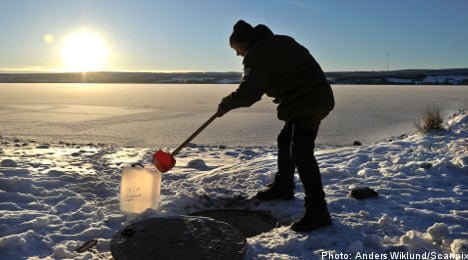The municipality hopes that the tests have found the source of the contamination, according to a statement on Thursday.
Östersund municipality is now considering how the area can be sealed off so that the parasite does not continue to reach the water treatment plant, it was revealed at the press conference.
Those responsible at the municipality would not reveal if the area was found in water or on land.
The details of the tests were passed on to police and prosecutors this morning.
Nearly one in ten residents of Östersund has now been hit by a stomach bug caused by the parasite in the municipal water supply.
By midnight on Wednesday, approximately 6500 people had notified a hotline on the municipality’s website that they have or have had stomach problems in recent days.
“There are quite a few, it’s almost one in ten people living in the municipality. The figure given yesterday was 5700,” said Jorgen Vikström at the municipality.
Two operating rooms at Östersund Hospital are today closed due to the rampaging stomache flu.
The infection has hit hospital staff – with almost 200 workers at home from work on Thursday, according to Sveriges Television (SVT). Hospital management expects an increasing number of sick staff over the next few days.
The hospital has 3000 liters of clean water driven in every day in order to secure water supplies.
The results of tests on samples of water taken from a municipal wastewater treatment plant are expected to be delivered on Thursday. It is hoped that the tests will provide confirmation on whether the plant is the source of the parasite infection.
The first tests of water samples taken from the plant showed no traces of the parasite, but it was later discovered that mistakes were made when the samples were collected and it had to be repeated.
The analysis of water samples carried out by the Swedish Institute of Infectious Disease Control (Smittskyddsinstitutet – SMI).
In addition to water samples from the treatment plant Östersund municipality’s environmental office has in recent days collected a large number of samples in the plant’s vicinity as well as samples of effluents from streams and storm sewers in the Storsjön lake.
“Information on the new test be given at a press conference, probably in the afternoon,” said Jorgen Vikström.
“However, I do not know if there will be any information on what the results show. I do not know if the answers will be ready by then. There is a lot of pressure on the institute at the moment due to the Östersund tests,” he said.



 Please whitelist us to continue reading.
Please whitelist us to continue reading.
Member comments